


Located in the South of France, and once part of the kingdom of northern Spain, Roussillon is one of the most exciting wine regions in the world. With Perpignan as its beating heart, it has been shaped over centuries by nature, history and its people. Nestled within a natural amphitheatre open to the Mediterranean sea, Roussillon’s vineyards are surrounded by mountain ranges and benefit from an ideal climate, perfect for the cultivation of vines. The region’s tumultuous geological history and resulting soil and subsoil diversity have created an extraordinary patchwork of micro-terroirs.
Roussillon enjoys a perfect Mediterranean climate with dry, hot summers, and mild autumns and winters. Roussillon is France’s sunniest wine region with 2,530 hours (316 days) of sunlight on average each year. Rainfall is low (500-600mms a year) and mostly brought by thunderstorms in the spring and autumn.
8 different types of wind blow across the wine growing area and, one day out of three, the mighty Tramontane, a dominating north wind, sweeps through the land .These drying winds help keep vineyards in near-perfect conditions, reducing the need for pest control or other human intervention.
Located in the eastern part of the Eastern Pyrenees ‘département’, the Roussillon amphitheatre is open to the Mediterranean on one side and surrounded by three mountain ranges: the Corbières to the North, the Pyrenees – with Mount Canigou – to the West, and the Albères to the South.
Three main rivers cross Roussillon’s vineyards to meet the sea. The Agly is the most northern and runs through many of the villages of the Côtes du Roussillon Villages appellation. The Têt, in the middle, flows past the city of Perpignan. The Tech is the most southerly and it meets the Mediterranean just north of the coastal vineyards of Banyuls and Collioure.
In geological terms, Roussillon suffered enormous upheavals in the tertiary and quaternary periods, including the rise of the Pyrenees mountain range. This created a complex variety of soil and subsoil and a multitude of terroirs.
From the Maury schists in the heart of the Agly Valley, those of the sea-facing terrasses of Collioure and Banyuls, to the clay and rocky soil of Aspres, each terroir brings distinctive characteristics and produces grapes with unique flavour profiles and attributes. This diversity is what gives Roussillon its extraordinary ability to produce a wide range of wines and styles across the region’s 14 AOPs and 2 IGPs.
A creation by Mappavini for the Roussillon Interprofessional Wine Council, with the support of the European Union and the Occitanie Region. (FEADER). All rights reserved. Photo and video credits: ©CIVR ©EmilioPerez ©Schulz ©Cazes ©Yasukofujisa ©Sobler

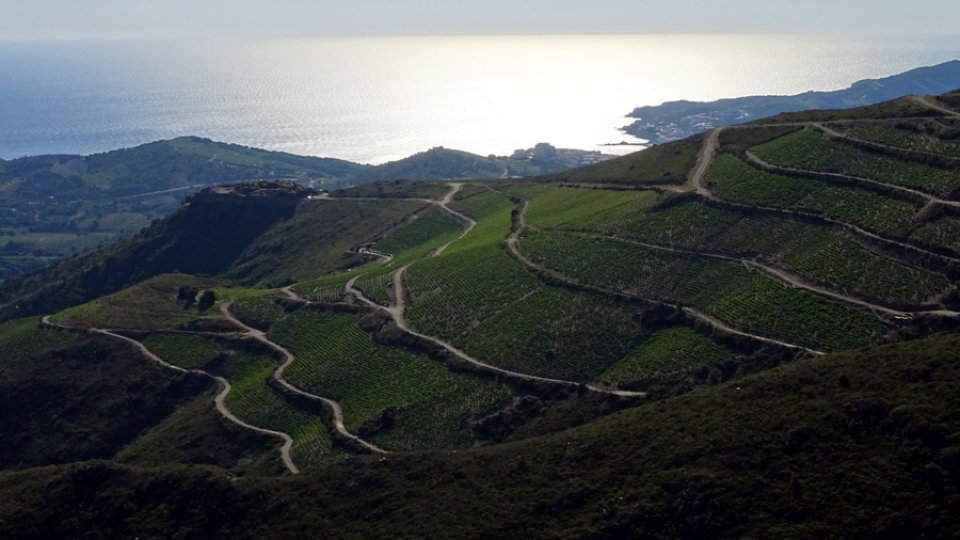
Area of Banyuls and Banyuls Grand Cru
The Appellation is only assigned to sweet still wines: Vins Doux Naturels Blanc, Rosé, Rimage or Rimage Mise Tardive, Ambré (amber) and Tuilé (tawny).
4 communes in the Eastern Pyrénées mountains: Collioure, Port-Vendres, Banyuls-sur-Mer et Cerbère
Grey schist soil from the Cambrian period. The vines are established on steep slopes with narrow terraces retained by low walls, facing the sea.
Principal varietals: Black Grenache, white Grenache, grey Grenache, Muscat à Petits Grains, Muscat d’Alexandrie, Macabeu, Tourbat or Malvoisie du Roussillon
Complementary varietals: Black Carignan, Cinsault, Syrah
Banyuls Rimage or Rimage Mise Tardive: Complex and elegant wines with notes of small, dark fruit, delicately gourmand.
Banyuls Ambré (amber), Tuilé (tawny): wines with notes of preserved fruits, figs and prunes.
Banyuls White: wines with floral notes, mixed with citrus and white fruits.
Banyuls Rosé : young and fresh wines, with notes of currants, blueberries and grenadine.
Banyuls Grand Cru : these wines develop flavours of stewed fruits, spices, mocha, tobacco ...
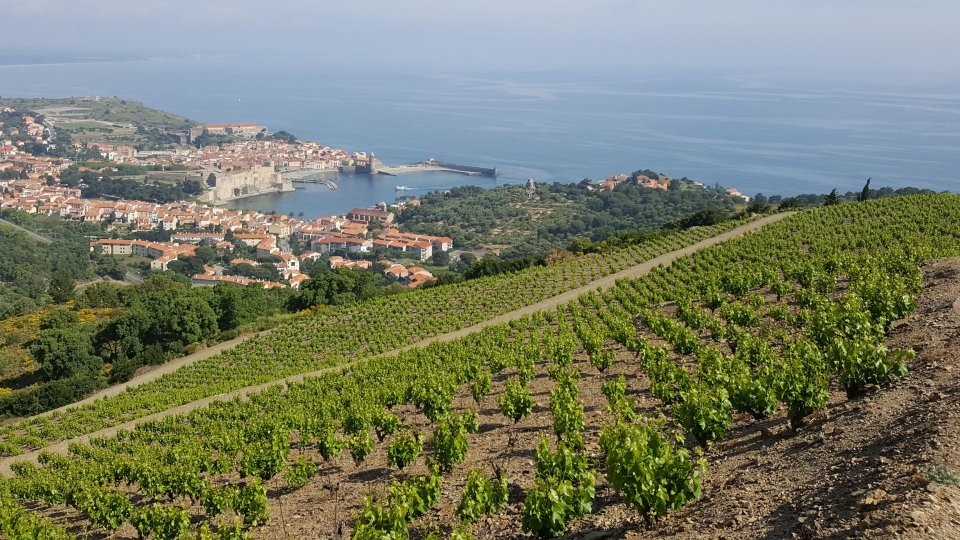
Area of Collioure
The Appellation is only assigned to still dry red, white and rosé wines.
4 communes in the Eastern Pyrénées mountains: Collioure, Port-Vendres, Banyuls-sur-Mer et Cerbère.
This Appellation grows on a balcony of grey schist from the primary (Cambrian) era that overlooks the Mediterranean. Ravines and hills alternate with each other, and the vines are established on very narrow terraces. The combination of these unique soils, intense sunlight and the sea makes for a very special micro-climate for this Appellation.
Red and Rosé wines:
Principal varietals: black Grenache, Syrah, Mourvèdre; Complementary varietals: Black Carignan, Cinsault, grey Grenache.
White wines:
White and grey Grenaches, Macabeu, Malvoisie, Marsanne, Roussanne, Vermentino.
Collioure Red: range from ample, fresh and fruity wines, alive with notes of pit-fruits and the air of the sea, to rich and complex wines with the aroma of spices and ripening fruits.
Collioure Rosé: fresh, strong wines, with complex notes of small, red fruits and minerals.
Collioure White: rich wines, intense, with notes of flowers, aniseed and minerals.
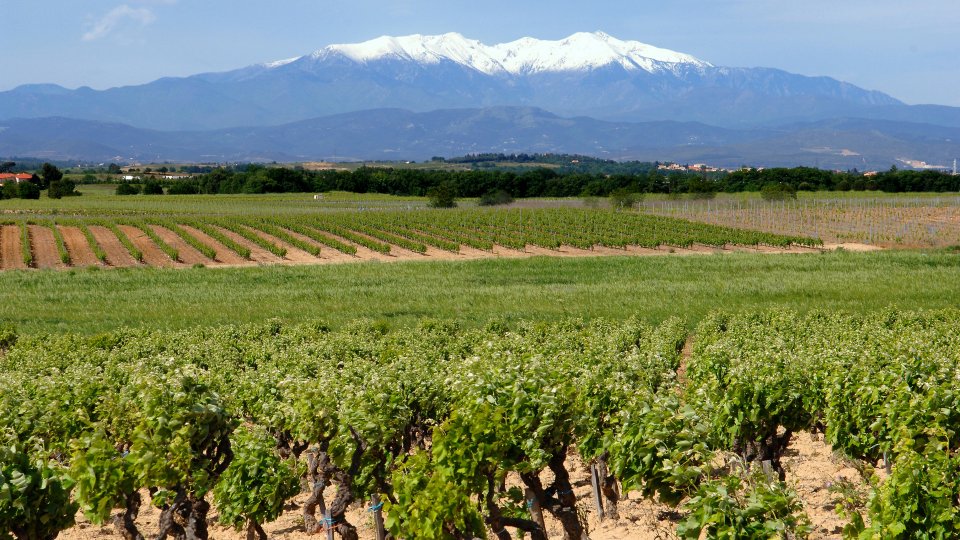
Area of Côtes du Roussillon
The appellation is assignated to still dry red, white and rosé wines.
102 communes in the Eastern Pyrénées Departement. Vast amphitheatre limited on the east by the Mediterranean, by the Albères mountain range and Spain on the south, the foothills of the Canigou on the west and the Corbières on the north. This territory is traversed by 3 rivers – the Agly, the Têt and the Tech – which have carved the land into hills and stacked terraces.
The soil is sandy granite and gneiss, with dark schist in the Fenouillèdes mountain range to the northwest. Red clay limestone in the Corbières foothills, sandy clay conglomerate in the Aspres and rocky terraces along the rivers, gneiss and siliceous clay hillsides of the Albères. Altitude from 0 to 650 meters.
Rosé and red wines: Black Grenache, black Carignan, Syrah, Mourvèdre, Lledoner Pelut, Cinsault. Macabeu and grey Grenache (for rosés only).
White wines: White Grenache, Macabeu, Tourbat or Malvoisie du Roussillon, grey Grenache, Roussanne, Marsanne, Vermentino. Viognier and white Carignan (from the harvest of 2017).
Côtes du Roussillon reds: wines that are corpulent, fruity and spicy.
Côtes du Roussillon rosés: wines with fresh flavours, echoes of small red fruit and flowers.
Côtes du Roussillon whites: delicate and elegant wines, with notes of citrus, white-fleshed fruits and flowers.
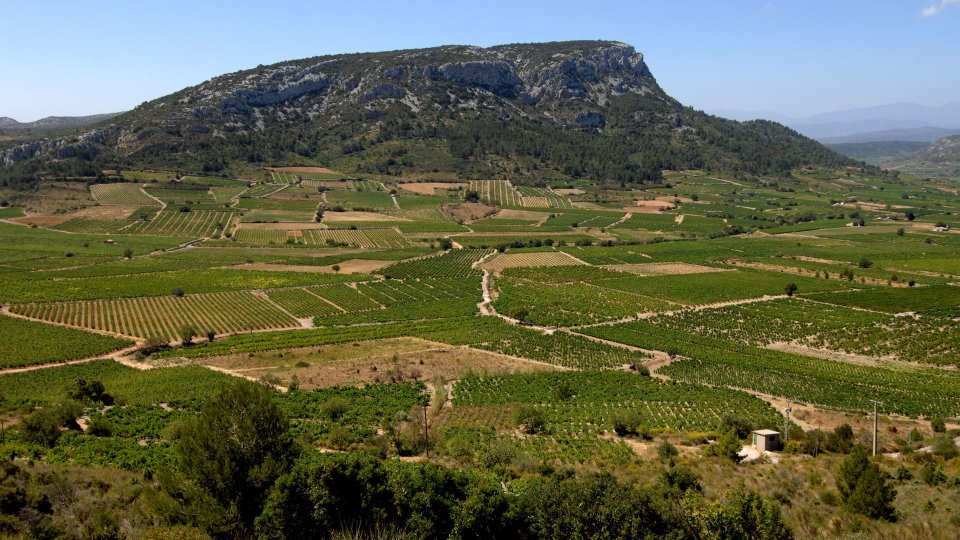
Area of Côtes du Roussillon Villages
The Appellation is only assignated to still dry red wines.
51 communes in the north of the Eastern Pyrenees Departement. Area limited on the north by the Aude department, by the Salses pond on the east, by the Têt river on the south and by the Fenouillèdes on the west. 19 new communes in Aspres terroir (since December 2019).
On the left bank of the Têt river: granitic and gneissic sandy soils, brown and black schists in the Agly valley, clay-limestone and limestone soils in the foothills of the Corbières, stony terraces.
On the right bank of the Têt river: rocky terraces mixed with yellow and red sandy clays.
Black Grenache, Black Carignan, Syrah, Mourvèdre, Lledoner Pelut.
Powerful and complex wines, suitable for keeping.

Area of Côtes du Roussillon Villages Caramany
The Appellation is only assignated to still dry red wines.
3 communes in the north of the Eastern Pyrénées Département: Caramany, Cassagnes and Bélesta.
The vineyard rises on average to 250m and the soils are essentially composed of gneiss and granite.
Black Grenache, Black Carignan, Syrah, Lledoner Pelut.
Carbonic maceration of Syrah and Carignan results in wines that are supple, fresh and full-bodied, meant to be drunk young, as well as concentrated wines, with notes of crushed dark fruits, strong spices and a very marked taste of the garrigue linked to its terroir.
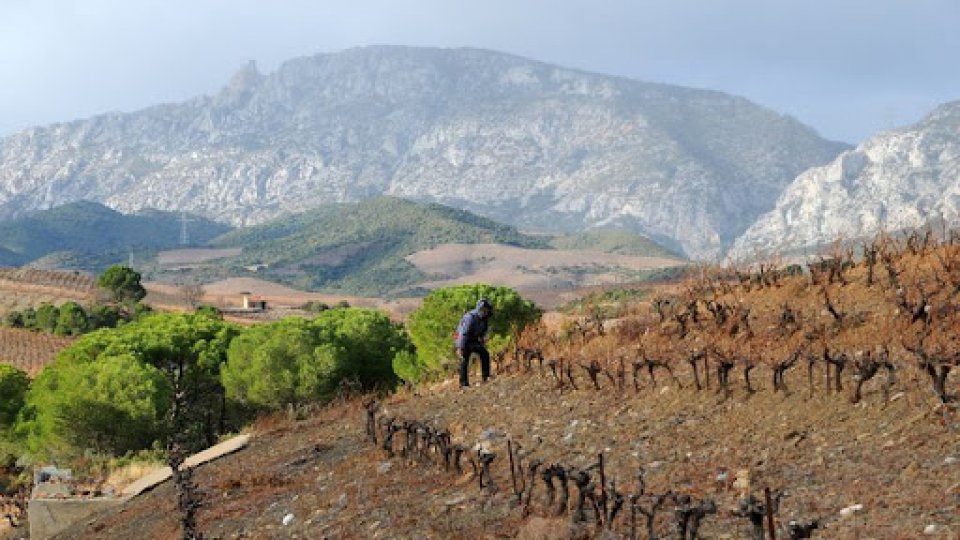
Area of Côtes du Roussillon Villages Latour de France
The Appellation is only assignated to still dry red wines.
5 communes in the north of the Eastern Pyrénées Département: Latour de France, Cassagnes, Montner, Estagel, Planèzes.
Mainly on the rocky soil of grey schist from the primary period but also on red clay limestone.
Black Grenache, Black Carignan, Syrah, Lledoner Pelut.
A terroir of garrigue and schist confers notes of wildness, minerals and sweet spices. Red soil makes these wines complex and suitable for keeping.

Area of Côtes du Roussillon Villages Les Aspres
The Appellation is only assignated to still dry red wines.
19 communes in the center of Eastern Pyrénées Département. Selected parcels of land with fine, gravel soil.
Rocky terraces mixed with yellow and red sandy clays in the South of the Têt river.
Black Grenache, Black Carignan, Syrah, Mourvèdre.
Elegant wines with wild and spicy notes. Wines to keep.

Area of Côtes du Roussillon Villages Lesquerde
The Appellation is only assignated to still dry red wines.
The Apellation covers the communes of Lesquerde, Lansac and part of Rasiguères, located in the heart of the Fenouillèdes, on the northwest of Perpignan.
The vineyard spreads across a vast plateau at 320 meters above sea level on average, on sandy granitic soils that contain a lot of iron and gypsum.
Black Grenache, Black Carignan, Syrah, Lledoner Pelut.
Very sophisticated wines marked by notes of minerals, graphite, spices and flowers.
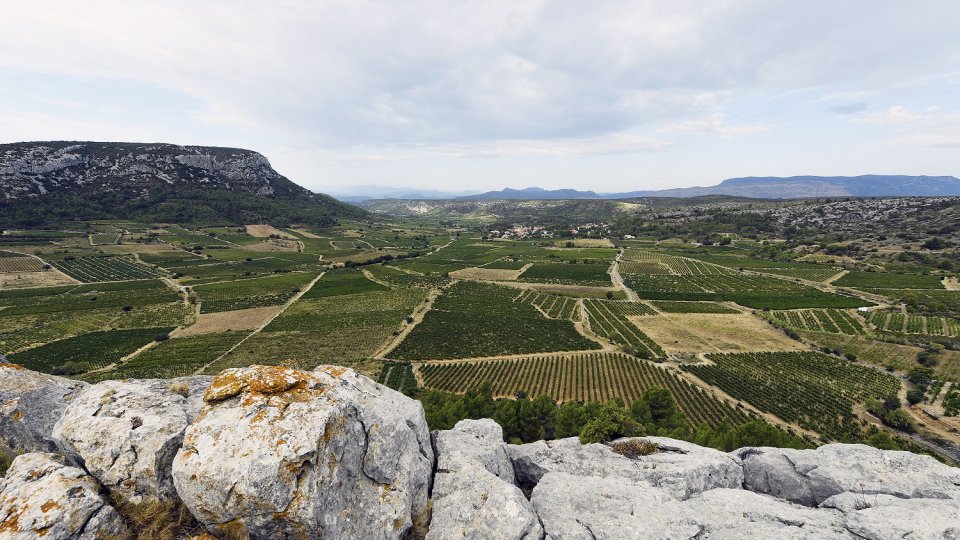
Area of Côtes du Roussillon Villages Tautavel
The Appellation is only assignated to still dry red wines.
2 communes in the north of the Eastern Pyrénées Département: Tautavel, Vingrau
Hill-planted vineyards spread across soil made of limestone and limestone-clay scree.
Black Grenache, Black Carignan, Syrah, Mourvèdre, Lledoner Pelut.
Wines with strong, complex and persistent tannins characterised by notes of dark fruits, garrigue and spices. Wines to keep.
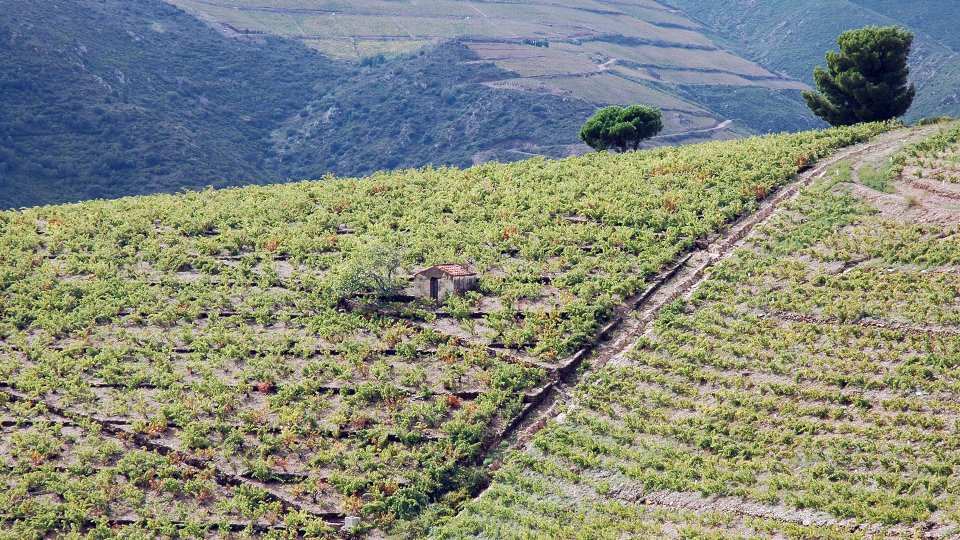
Area of IGP Côte Vermeille
The Indication is only assigned to still dry red, white and rosé wines.
![]()
![]() Average surface area of vines over the last 5 years: 7 Hectares
Average surface area of vines over the last 5 years: 7 Hectares
4 communes in the southeast of the Eastern Pyrénées Département : Banyuls-sur-Mer, Cerbère, Collioure, Port-Vendres.
Vines grow on terraced slopes facing the sea. Soil is grey schist of the Cambrian period.
Rosés and red wines: Black Grenache, black Carignan, Cinsault, Lledoner Pelut, Mourvèdre, Syrah, Merlot, Cabernet Sauvignon, Cabernet Franc, Chenanson, Marselan
White wines: White and grey Grenaches, Macabeu, Malvoisie du Roussillon, Marsanne, Roussanne, Vermentino, Muscat d’Alexandrie, Muscat Petits Grains, Chardonnay, white Sauvignon and Viognier.
IPG Côte Vermeille red wines: light, easy-to-drink wines.
IPG Côte Vermeille rosé wines: light, fresh wines.
IPG Côte Vermeille white wines: full, fresh wines.
Wines carrying the mention « rancio »: white or red at the start, end up in time, with a dark amber colour, sometimes walnutcoloured with bronze accents, and offer typical notes of dried fruit (nuts, almonds...).

Area of IGP Côtes Catalanes
The Indication is only assigned to still dry red, white and rosé wines.
118 communes in the Eastern Pyrénées Département.
Red and rosé wines : mainly black Grenache, black Carignan, Cinsault, Lledoner Pelut, Mourvèdre, Syrah, Merlot, Cabernet Sauvignon, Cabernet Franc, Chenanson, Marselan.
White wines: mainly white and grey Grenaches, Macabeu, Malvoisie du Roussillon, Marsanne, Roussanne, Vermentino, Muscat d’Alexandrie, Muscat Petits Grains, Chardonnay, Sauvignon Blanc et Viognier.
WINES
IPG Côtes Catalanes red wines: light easy to drink or full-bodied strong wines, they often fully reflect the main characteristics of the grapes from which they come.
IPG Côtes Catalanes rosé wines: fresh wines with echoes of small red fruits and flowers.
IPG Côtes Catalanes white wines: light and delicate or concentrated wines, their flavour, richness and structure generally reflect the varietals used to make them.
Wines that carry the mention « rancio »: white or red at the start, end up, in time, with a deep amber colour, sometimes walnut, with characteristic gold undertones and typical notes of dried fruit (walnuts, almonds...)
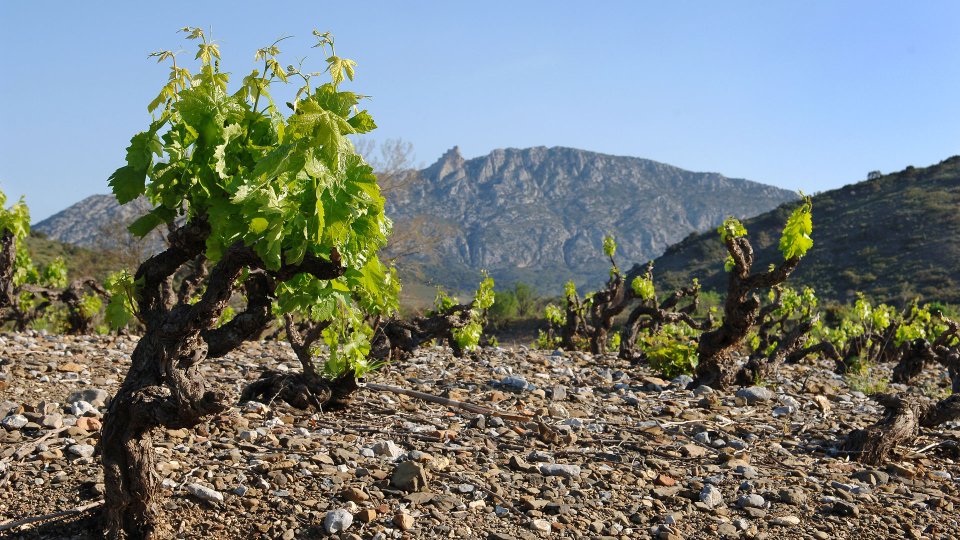
Area of Maury
The Appellation is only assignated to sweet still wines, "Vins Doux Naturels" Blanc (white), Tuilé (tawny), Ambré (amber) and Grenat (garnet).
![]()
![]() Average surface area of vines over the last 5 years: 224 Hectares
Average surface area of vines over the last 5 years: 224 Hectares
4 communes in the Eastern Pyrénées, northwest of Perpignan (Maury, Tautavel, Saint-Paul de Fenouillet, Rasiguères).
Maury vineyards are spread over black marl and black schist hills surrounded by the garrigue.
Grenat (garnet) and Tuilé (tawny) wines:
Main varietals: black Grenache, white Grenache, grey Grenache
Complementary varietals: black Carignan, Syrah,Macabeu
White and Ambré (amber) wines: grey and white Grenaches, Macabeu, Tourbat, Muscat d’Alexandrie, Muscat à Petits Grains
Maury Grenat: Strong wines, complex on notes of black fruits and garrigue.
Maury Tuilé: 30 months minimum ageing in an oxidizing environment. Wines with echoes of dried fruits, cocoa and coffee.
Maury White: Wines with notes of white-fleshed fruits and citrus that evolve over time into flavours of syrupy preserved fruits.
Maury Ambré: Complex wines with notes of preserved white and yellow fruits, spices cake, caramel...
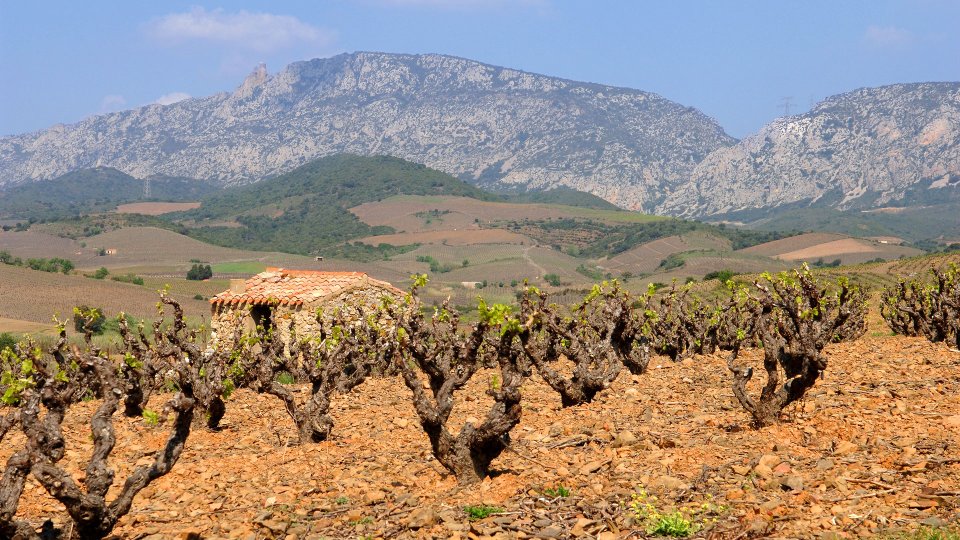
Area of Appellation Maury
The Appellation is only assigned to still dry red wines.
4 communes in the northwest of Perpignan: Maury, Tautavel, Saint-Paul de Fenouillet, Rasiguères.
The Maury vineyard spreads across hills of schist and black marl on slopes encircled by garrigue.
Main varietal: Black Grenache
Complementary varietals: Black Carignan, Mourvèdre, Syrah
Accessory varietal: Lledoner Pelut
Dark, rich, strong and very flavourful, Dry Maury wines are notable for their notes of dark fruits combined with garrigue. They are distinguished in the mouth by their full body and tannin robe encouraged by a minimal period of Ageing. Good structure and balance ensure very good ageing.
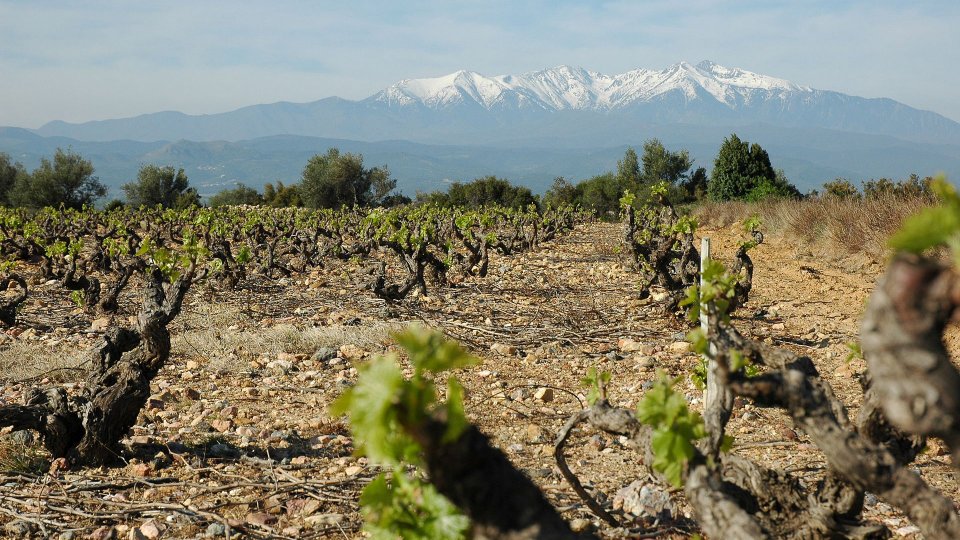
Area of Muscat de Rivesaltes
The Appellation is only attributed to sweet still wines, white "Vins Doux Naturels" made from Muscats.
The Appellation covers 90 communes in the Eastern Pyrénées Département and 9 communes in the Aude neighbour Département. It also faces the Mediterranean to the east, Spain to the south and west to the foothills of the Canigou.
All the terroirs in Roussillon, including, among others: sandy granitic and gneissic soils, black and brown schists in the Fenouillèdes mountains in the northwest, red limestone- clay and limestone at the foothills of the Corbières, sandy clay in the Aspres and rocky terraces along the rivers, gneiss and siliceous clay in the Albères, grey schist in the terroirs of Collioure and Banyuls.
Muscat à Petits Grains and Muscat d’Alexandrie
Strong and intense, the Alexandria Muscat provides fullness and flavours of ripe fruit, fresh grapes and roses. Light and fresh, the Small Grape Muscat brings scents of exotic fruits and citrus. Young Muscats are pale gold, with echoes of peach, lemon, mango and mint. After several years, their golden robe becomes deeper and their flavours evolve into notes of honey and preserved apricot.

Area of Rivesaltes
The Appellation is only asignated to sweet still wines, "Vins Doux Naturels" Grenat (garnet), Tuilé (tawny), Ambré (amber) and Rosés.
86 communes in the Eastern Pyrénées Département and 9 communes in the Aude. The area is also bordered by the Mediterranean to the east, the Albères range on the south and the foothills of the Canigou on the west.
The vines grow on all the terroirs in Roussillon, including, among others: sandy granitic and gneissic soils, black and brown schists in the Fenouillèdes mountain range in the northwest, red limestoneclay and lime at the foothills of the Corbières, sandy clay in the Aspres and rocky terraces along the rivers, gneiss and siliceous clay in the Albères.
Grenat (garnet) wines: Black Grenache
Tuilé (tawny) wines: Black Grenache, white Grenache, grey Grenache, Macabeu, Tourbat or Malvoisie du Roussillon, Muscat à Petits Grains, Muscat d’Alexandrie.
Ambré (amber) wines: white Grenache, grey Grenache, black Grenache, Macabeu, Tourbat or Malvoisie du Roussillon, Muscat à Petits Grains, Muscat d’Alexandrie.
Rosé wines: white Grenache, grey Grenache, black Grenache, Macabeu, Tourbat or Malvoisie du Roussillon, Muscat à Petits Grains, Muscat d’Alexandrie.
Rivesaltes Grenat: Full-bodied wines with rich cherry and blackberry flavours.
Rivesaltes Tuilé: Intense wines with notes of roasted cocoa, coffee, tobacco and preserved fruits (prunes, figs...)
Rivesaltes Ambré: Complex wines with notes of preserved orange, spices cake, dried fruits, caramel and sweet spices.
Rivesaltes Rosé: fresh, young wines, with echoes of currants, blueberries and grenadine.